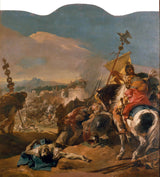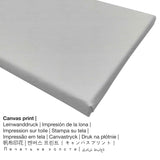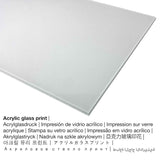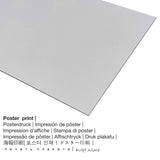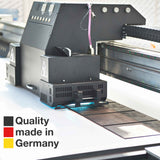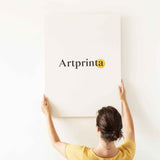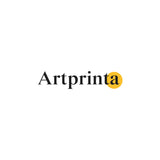Giovanni Battista Tiepolo, 1725 - Mweghara nke Carthage - mbipụta nka mara mma
Ụtụ gụnyere. Mbupu gbakọrọ na ndenye ọpụpụ.
Nkọwapụta edemede
The artwork "The Capture of Carthage" was created by Giovanni Battista Tiepolo in 1725. The over 290 year-old original measures the size of Irregular painted surface, 162 x 148 3/8 in (411,5 x 376,9 cm). Mmanụ na kwaaji was used by the Italian artist as the technique for the piece of art. It is in the the Ụlọ ihe ngosi nka nke Metropolitan mkpokọta, nke dị na New York City, New York, Njikota Obodo Amerika. Omuma nka nka, nke dị na ngalaba ọha a gụnyere ya na nkwanye ùgwù nke Ụlọ ihe ngosi nka nke Metropolitan, New York, Rogers Fund, 1965. : Rogers Fund, 1965. Further, the alignment is in Eserese format na akụkụ ruru nke 1: 1.2, which means that the length is 20% shorter than the width. The painter, printmaker Giovanni Battista Tiepolo was an artist from Italy, whose artistic style was primarily Rococo. The Rococo painter was born in 1696 in Venice, Venezia province, Veneto, Italy and passed away at the age of 74 in the year 1770.
Nye iwu ihe ngwaahịa ịchọrọ
Anyị na-enye ihe dị iche iche dị iche iche na nha maka ngwaahịa ọ bụla. Anyị na-ahapụ gị ka ịhọrọ n'ime ụdị ndị a:
- Mbipụta nke aluminom: Aluminium Dibond prints are metal prints with an outstanding effect of depth, creating a modern look throuch a non-reflective surface structure. The Direct Print on Aluminum Dibond is your ideal introduction to the sophisticated world of replicas made with aluminum.
- Kwaaji: A canvas print, not to be mistaken with a canvas painting, is a digital image printed on a UV direct printing machine. A canvas produces a extra effect of three-dimensionality. Besides, canvas print generates a cosy and comfy appearance. A canvas print has the advantage of being relatively low in weight. That means, it is easy and straightforward to hang your Canvas print without the help of additional wall-mounts. Therefore, canvas prints are suited for any kind of wall.
- Akwụkwọ mmado ebipụtara (ihe kwaaji): The Artprinta poster print is a UV printed canvas with a slight finish on the surface. A poster is ideally suited for putting the art print using a custom frame. Please bear in mind, that depending on the absolute size of the canvas poster print we add a white margin 2-6 cm around the artwork, which facilitates the framing with a custom frame.
- Ihe odide acrylic glass: The acrylic glass print, which is often described as a an art print on plexiglass, will turn your selected original into beautiful home décor. Besides, the acrylic print makes a viable alternative to dibond or canvas fine art prints. The artwork is being manufactured with modern UV print technology. With an acrylic glass fine art print sharp contrasts and also details become more exposed due to the very subtle gradation of the picture. Our real glass coating protects your custom fine art print against sunlight and external influences for up to six decades.
Ederede iwu: We try our utmost in order to depict the products as clearly as it is possible and to illustrate them visually on the various product detail pages. Still, the colors of the print products and the imprint can differ to a certain extent from the image on your device's screen. Depending on your screen settings and the condition of the surface, not all color pigments will be printed one hundret percent realistically. In view of the fact that our fine art prints are processed and printed by hand, there might as well be slight discrepancies in the exact position and the size of the motif.
Banyere ihe
| Nkewa edemede: | ọrụ mgbidi |
| Usoro mmeputakwa: | dijitalụ mmeputakwa |
| Production usoro: | Mbipụta UV ozugbo (mbipụta dijitalụ) |
| Ihe ngosi: | German mere |
| Ụdị ngwaahịa: | mmepụta ihe na-achọ |
| Ngwaahịa were: | ime ụlọ, ihe ndozi ụlọ |
| Ntuziaka onyonyo: | nhazi ihe osise |
| Njikwa oyiyi: | 1:1.2- ogologo: obosara |
| Nsonaazụ nke oke onyonyo: | ogologo bụ 20% mkpụmkpụ karịa obosara |
| Akwa mmeputakwa dị: | Mpempe akwụkwọ, akwụkwọ mmado (akwụkwọ akpa), mbipụta enyo acrylic (nwere ezigbo mkpuchi iko), mbipụta ọla (aluminium dibbond) |
| Mbipụta kanvas (akwa akwa na etiti ihe ndọtị) dị iche iche: | 50x60cm - 20x24" |
| Mbipụta iko acrylic (nwere ezigbo mkpuchi iko) nhọrọ nha: | 50x60cm - 20x24" |
| Ụdị akwụkwọ mmado (akwụkwọ kwaaji) dị iche iche: | 50x60cm - 20x24" |
| Nhọrọ ebipụta aluminom: | 50x60cm - 20x24" |
| Igwe onyonyo: | na-enweghị etiti |
Ozi ndabere gbasara nka pụrụ iche
| Aha nka nka: | "The Capture of Carthage" |
| Nhazi nka: | sere |
| Okwu nche anwụ: | nka ochie |
| Century: | 18th narị afọ |
| Emepụtara n'afọ: | 1725 |
| Afọ nka: | 290 afọ |
| Usoro izizi: | mmanụ na kwaaji |
| Nha izizi nka: | Ebe a na-ese ihe oge niile, 162 x 148 3/8 inch (411,5 x 376,9 cm) |
| Ụlọ ihe ngosi nka / ebe: | Museumlọ ihe ngosi nka nke Obodo |
| Ebe ngosi nka: | New York City, New York, Njikota Obodo Amerika |
| URL webụ: | Museumlọ ihe ngosi nka nke Obodo |
| Ụdị nka nka: | ngalaba ọha |
| Site n'aka: | Ụlọ ihe ngosi nka nke Metropolitan, New York, Rogers Fund, 1965 |
| Ebe kredit nke ọrụ nka: | Rogers Fund, 1965 |
Tebụl metadata omenkà
| Aha onye nka: | Giovanni Battista Tiepolo |
| Aha utu aha: | giovanni batt. tiepolo, giovanni bapt. tiepolo, giovanni tiepolo, Tʹepolo Dzhovanni Battista, Gio Baptista Tiepolo, Tiopolo, Tiepolo Giov. Batt., Tiépolo Juan Bautista, Teipolo, J. B. Tiepolo le père, Tiepolo C. B., Giovanni Battista Tiepolo, Tiepolo Giovanni, Giambatista Tiepelo, nachahmer des tiepolo, Tiepolo, G.B. Tiepolo, Hiepolo, giov. batt. tiepolo, Le Tiépoli, Gio. Battista Tiepolo, Tiepulo, Tiipolo, Tiepolo G. B., Tiopalo, טייפולו ג'ובאני בטיסטה, Giambattista Tiepolo, Teipolo Giovanni Battista, giovanni baptista tiepolo, Tripolo, F. B. Tiepolo, giov. battista tiepolo, Tiepoli Giovanni Battista, Diebolo, Johann Baptista Tiepolo, Jean-Baptiste Tiepolo, Tiepolo Giovanni Battista, Tiepolo Giovanni Battista, Diepolo, Gian Battista Tiepolo, tiepolo g.b., Tibolo, Giambatista Tiepolo, Tiepoli, tiepolo giov. b., tiepolo g. battista, Tippoli, Joh. Bapt. Tiepolo, Tripoli, Tiepolo J. B., Juan Bautista Tiepolo, Giovanni Batista Tiepolo, Tiepolo Giambattista, Tiepolo G.B., J.-B. Tiépolo, Tieoplo, J. Batista Tiepolo, G. Tiepolo, Tiepolo Gio. Battista, Tiopoli, j.b. tiepolo, Johann Babtiste Tiepolo, giovanni b. tiepolo, Johann Bapt. Tiepolo, Tipolo, g. b. tiepolo, Thiepolo, J. B. Tiepolo, Tipoli |
| okike onye nka: | nwoke |
| Obodo onye nka: | Italian |
| Ọrụ: | onye na-ese ihe, onye na-ebi akwụkwọ |
| Obodo onye nka: | Italy |
| Nkewa onye nka: | nna ukwu ochie |
| Ụdị nke onye na-ese ihe: | Rococo |
| Akwụsị: | 74 afọ |
| Amụrụ n'afọ: | 1696 |
| Amụrụ na (ebe): | Venice, mpaghara Venezia, Veneto, Italy |
| Afọ ọnwụ: | 1770 |
| Obodo ọnwụ: | Madrid, mpaghara Madrid, Comunidad de Madrid, Spain |
Enwere ikike nwebiisinka ©, Artprinta.com
Ozi nka ndị ọzọ sitere na webụsaịtị ihe ngosi nka (© - nke Ụlọ ihe ngosi nka nke Obodo ukwu - www.metmuseum.org)
This painting is from a series of ten magnificent canvases painted to decorate the main room of Ca’ Dolfin, Venice. The subject has been variously identified. It probably shows the capture of Carthage by Cornelius Scipio Aemilianus (known as Scipio Africanus the Younger) in 146 B.C., a momentous event that categorically ended the power of Carthage. The carnage was unspeakable and the city burned for seventeen days. The depiction of this event probably carried an allusion to the recent campaigns of the Venetians against the Turks in the Mediterranean, and in particular to the participation of Daniele Dolfin.

